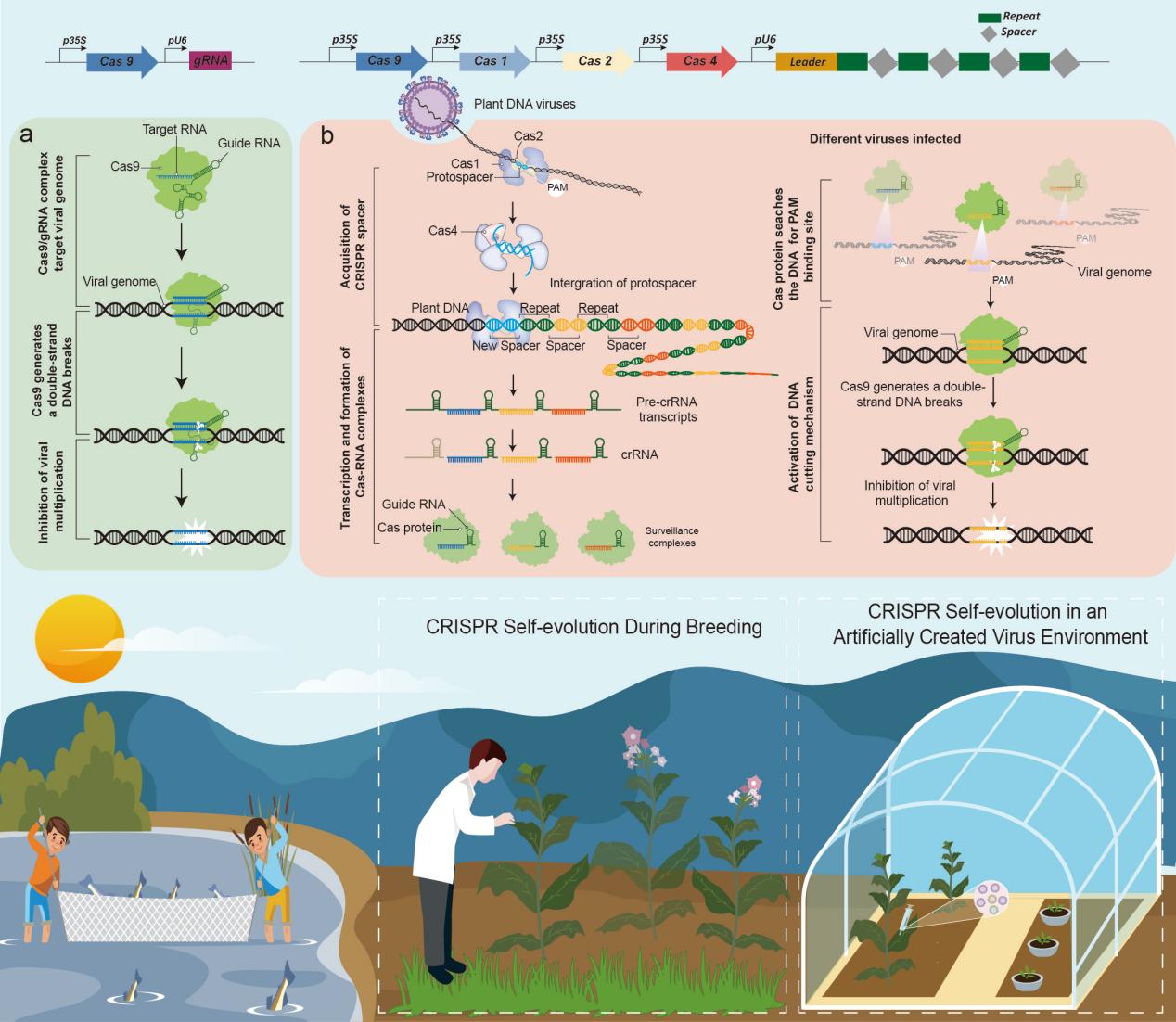A perspective study proposing a novel plant intelligent immune engineering strategy, enabling plants to autonomously capture and memorize viral nucleic acids to acquire bacterial-like adaptive immunity, has been published in Plant Biotechnology Journal. This perspective work was jointly conducted by the Biotechnology Research Institute of the Chinese Academy of Agricultural Sciences (CAAS) and the Isotope Research Institute of Henan Academy of Sciences.

Figure 1. Conceptual diagram of intelligent plant immunity
While current CRISPR-Cas-based plant antiviral approaches rely on targeting one or a few specific viral sequences—limiting resistance efficiency, viral strain coverage, and adaptability to rapid viral mutations or co-infections—this study reimagines plant immunity through the lens of the Chinese proverb, "Give a man a fish and you feed him for a day; teach a man to fish and you feed him for a lifetime." By engineering plants to express a reconstituted bacterial CRISPR-Cas immune system, the team empowered plants to dynamically acquire and memorize viral genetic information, achieving broad-spectrum, self-evolving antiviral defense.
To accelerate agricultural deployment, the researchers proposed an "artificial accelerated training" protocol: foundational disease-resistant plant lines are selected through controlled multi-virus exposure, then bred for crop improvement. These engineered plants further exhibit "field self-evolution"—their CRISPR arrays progressively expand as they encounter natural viral challenges, continuously strengthening resistance in a true "teach plants to fish" paradigm.
Future prospects: Integrating synthetic biology with AI-driven spacer sequence design, this technology could revolutionize global food security and ecological protection by creating crops capable of autonomous pathogen adaptation.
Article link: https://onlinelibrary.wiley.com/doi/epdf/10.1111/pbi.70066
|